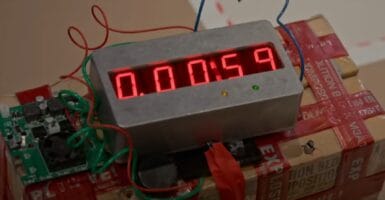ESA Wants To Penetrate Jupiter’s Moon Europa
This article is more than 2 years old
The act of firing bullets is usually a destructive endeavor, not one normally associated with a quest for knowledge. This perception could change somewhat if and when British scientists launch a 44-pound bullet at Jupiter’s moon Europa. The projectile, called the Penetrator—such an unfortunate name—was recently fired at ten ton brick of ice, and because all of its major internal organs and circuits remained intact, the European Space Agency (ESA) decided to move ahead with the project.
Though it looks like an awful lot like an offensive weapon, the Penetrator will really be home to a variety of scientific equipment, like seismographs, or a miniature chemistry lab that could be used to examine samples in search of any microbial life beneath the surface. Researchers hope that this approach could be a more cost effective way to explore the surface of other planets. Instead of spending a vast amount of resources on rovers and other exploratory probes, several devices like these could be deployed over as large an area as you please, and send back information about a wide region. They might not have the lifespan, or the ability to get into as much detail as their counterparts, but they could definitely fill a specific niche in space exploration.
The stout little projectile will launch from a satellite orbiting the moon then burrow a few meters into the icy surface. Scientists say that achieving such a depth is key, because if there is any life, it will likely be tucked away from the space radiation.
This technology has been in the works for more than a decade, and though the project has been put on ice a couple of times, researchers found the idea of a “hard lander” too tempting to pass up. Project manager Sanjay Vijendran said, “Penetrators offer a number of advantages over ‘soft landers,’ which have to slow down to reach the surface safely.” They require less bulky, expensive hardware to arrest a descent, and can lodge at an appropriate depth without having to drill.
This latest test provides a ton of useful information to research teams about the force the impact will have. The prototype they tested has a number of different features to keep its payload safe. A powerful spring separates the cargo apart from the exterior, and the whole outside is made of polymer capable of maintaining a protective 2mm gap around the instruments, even during impact.
The next phase of development revolves around battery life and communication. While it will have a more limited lifespan than soft landers, there still needs to be enough juice to run the penetrator long enough for it to complete its assigned tasks. While there is no specific mission on the horizon, engineers estimate that they could be ready for launch by the end of the decade.












